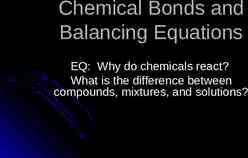Cardiovascular Disease and the Patient with Diabetes and
68 Slides2.48 MB

Cardiovascular Disease and the Patient with Diabetes and Metabolic Syndrome Nathan D. Wong, PhD, FACC, FAHA Professor and Director Heart Disease Prevention Program Division of Cardiology University of California, Irvine President, American Society for Preventive Cardiology

Presenter Disclosure Dr. Wong has received research support through Bristol-Myers Squibb, Novartis, and Forest Laboratories through the University of California, Irvine

Presentation Objectives Review the epidemiology implicating metabolic syndrome and diabetes in cardiovascular risk Discuss the clinical trial evidence for the role of lifestyle management, glycemic, lipid, and blood pressure control. Address the ABCs of lifestyle and clinical management of metabolic syndrome and diabetes aimed to reduce cardiovascular disease risk.

Diagnosed Diabetes in the US: 2008 CDC BRFSS: Self-Reported Diabetes: 8.2% Nationwide 4 – 6% 6 – 8% http://apps.nccd.cdc.gov/brfss/list.asp?cat DB&yr 2008&qkey 1363&state All 8 – 10% 10 – 12%

14.9 Percent of Population 16 14.2 13.1 14 11.3 12 10 8 6 6.1 5.8 4 2 0 Men NH Whites Women NH Blacks Mexican Americans Prevalence of physician-diagnosed diabetes in Adults age 20 and older by race/ethnicity and sex (NHANES: 2005-2006). Source: NCHS and NHLBI. NH – non-Hispanic.

The Continuum of CV Risk in Type 2 Diabetes Adapted from American Diabetes Association. Diabetes Care. 2003;26:3160-3167. Tsao PS, et al. Arterioscler Thromb Vasc Biol. 1998;18:947-953. Hsueh WA, et al. Am J Med. 1998;105(1A):4S-14S. American Diabetes Association. Diabetes Care. 1998;21:310-314.

Diagnostic Criteria for Metabolic Syndrome: Modified NCEP ATP III 3 Components Required for Diagnosis Components Defining Level Increased waist circumference Men Women Elevated triglycerides Reduced HDL-C Men Women Elevated blood pressure Elevated fasting glucose AHA/NHLBI Scientific Statement; Circulation 2005; 112:e285-e290. 40 in 35 in 150 mg/dL (or Medical Rx) 40 mg/dL 50 mg/dL (or Medical Rx) 130 / 85 mm Hg (or Medical Rx) 100 mg/dL (or Medical Rx)

IDF Criteria: Abdominal Obesity and Waist Circumference Thresholds Men Women Europid 94 cm (37.0 in) 80 cm (31.5 in) South Asian 90 cm (35.4 in) 80 cm (31.5 in) Chinese 90 cm (35.4 in) 80 cm (31.5 in) Japanese 85 cm (33.5 in) 90 cm (35.4 in) AHA/NHLBI criteria: 102 cm (40 in) in men, 88 cm (35 in) in women Some US adults of non-Asian origin with marginal increases should benefit from lifestyle changes. Lower cutpoints ( 90 cm in men and 80 cm in women) for Asian Americans Alberti KGMM et al. Lancet 2005;366:1059-1062. Grundy SM et al. Circulation 2005;112:2735-2752.

Prevalence (%) Prevalence of the Metabolic Syndrome Among US Adults NHANES 1988-1994 45 40 35 30 25 20 15 10 5 0 Men Women 20-29 30-39 Ford E et al. JAMA. 2002(287):356. 40-49 50-59 60-69 70 Age (years) 1999-2002 Prevalence by IDF vs. NCEP Definitions (Ford ES, Diabetes Care 2005; 28: 2745-9) (unadjusted, age 20 ) NCEP : 33.7% in men and 35.4% in women IDF: 39.9% in men and 38.1% in women

Diabetes and CVD Atherosclerotic complications responsible for – 80% of mortality among patients with diabetes – 75% of cases due to coronary artery disease (CAD) – Results in 75% of all hospitalizations for diabetic complications 50% of patients with type 2 diabetes have preexisting CAD. (This number may be less now that more younger people are diagnosed with diabetes.) 1/3 of patients presenting with myocardial infarction have undiagnosed diabetes mellitus Lewis GF. Can J Cardiol. 1995;11(suppl C):24C-28C Norhammar A, et.al. Lancet 2002;359;2140-2144

Risk of Cardiovascular Events in Patients with Diabetes: Framingham Study Age-adjusted adjusted Cardiovascular Event Biennial Rate Per 1000 Men Women Age- Risk Ratio Men Women Coronary Disease 39 21 1.5** 2.2*** Stroke 15 6 2.9*** 2.6*** Peripheral Artery Dis. 18 18 3.4*** 6.4*** Cardiac Failure 23 21 4.4*** 7.8*** All CVD Events 76 65 2.2*** 3.7*** Subjects 35-64 36-year Follow-up **P .001,***P .0001

7-year incidence rate of MI Diabetes as a CHD Risk Equivalent: Type 2 DM and CHD 7-Year Incidence of Fatal/Nonfatal MI (East West Study) P 0.001 P 0.001 45.0% 18.8% 20.2% 3.5% No Diabetes Diabetes CHD coronary heart disease; MI myocardial infarction; DM diabetes mellitus Haffner SM et al. N Engl J Med. 1998;339:229-234.

Cardiovascular Disease (CVD) and Total Mortality: U.S. Men and Women Ages 30-74 (Risk-factor adjusted Cox regression) NHANES II Follow-Up (n 6255) *** *** *** *** *** *** *** *** * Malik and Wong, et al., Circulation 2004; 110: 1245-1250. ** *** *** * p .05, ** p .01, **** p .0001 compared to none

Odds of CVD Stratified by CRP Levels in U.S. Persons (Malik and Wong et al., Diabetes Care 2005; 28: 690-3) 6 O d d s R a t i o *** 5 4 3 2 *** * * ** 1 0 High CRP No Metabolic disease Syndrome Low CRP Diabetes –*p .05, **p .01, **** p .0001 compared to no disease, low CRP –CRP categories: 3 mg/l (High) and 3 mg/L (Low) –age, gender, and risk-factor adjusted logistic regression (n 6497)

Example of Significant Coronary Calcification from Multidetector CT (Siemens Sensation 64) scanner

10-Year CHD Event Rates (per 1000 person years) by Calcium Score by CAC Categories in Subjects with Neither Coronary HeartMetS Disease nor DM, MetS only, or DM CHD events per 1000 person years Diabetes MetS Neither MetS/DM 0 1-99 100-399 400 Coronary Artery Calcium Score Malik and Wong et al. (AHA 2009)

Under-Treatment of Cardiovascular Risk Factors Among U.S. Adults with Diabetes – NHANES Survey 2001-2002, 532 (projected to 15.2 million) or 7.3% of adults aged / 18 years had diabetes – 50.2% not at HbA1c goal 7% – 64.6% not at LDL-C goal 100 mg/dl – 52.3% not at recommended HDL-C / 40 (M), / 50 (F) – 48.6% not at recommended triglycerides 150 mg/dl – 53% not at BP goal of 130/80 mg/dl – Overall, only 5% of men and 12% of women at goal for HbA1c, BP, and LDL-C simultaneously Malik S, Wong ND et al. Diab Res Clin Pract 2007;77:126-33.

Summary of Care: ABC's for Providers A B C D E F A1c Target Aspirin Daily Blood Pressure Control Cholesterol Management Cigarette Smoking Cessation Diabetes and Pre-Diabetes Management Exercise Food Choices

Summary of Care: ABC's for Providers A A1c Target Aspirin Daily B C D E F Blood Pressure Control Cholesterol Management Cigarette Smoking Cessation Diabetes and Pre-Diabetes Management Exercise Food Choices

A1c Target Aspirin Therapy A1c Target: In persons with diabetes, glucose lowering to achieve normal to near normal plasma glucose, as defined by the HbA1c 7% Aspirin Daily: Patients with type 2 DM 40 years of age or with prevalent CVD, OR those with metabolic syndrome without DM who are at intermediate or higher risk (e.g., 10% 10-year risk of CHD)

Type 2 Diabetes: A1C Predicts CHD CHD Mortality Incidence (%) in 3.5 Years * 12 10 25 ** 20 8 15 6 10 4 5 2 0 All CHD Events Incidence (%) in 3.5 Years Low 6% Middle 6-7.9% High 7.9% 0 Low 6% A1C hemoglobin A1C *P 0.01 vs lowest tertile **P 0.05 vs lowest tertile Adapted with permission from Kuusisto J et al. Diabetes. 1994;43:960-967. Middle 6-7.9% High 7.9%

UKPDS Relative Risk Reduction % relative risk reduction for Intensive vs. Less Intensive Glucose Control P 0.03 P 0.05 P 0.02 P 0.01 P 0.01 Over 10 years, HbA1c was 7.0% (6.2-8.2) in the intensive group (n 2,729) compared with 7.9% (6.9-8.8) in the conventional group (n 1,138). UKPDS Group. Lancet. 1998;352:837-853.

UKPDS Metformin Sub-Study: CHD Events Coronary Deaths Myocardial Infarction 10 p 0.01 NS 39% Reduction 15 10 5 0 Incidence per 1000 patient years Incidence per 1000 patient years 20 8 n #Events 411 73 UKPDS 34, Lancet 352: 854, 1998 951 139 Metformin 342 39 50% Reduction 6 4 2 0 Conventional Insulin SU’s Diet p 0.02 Conventional Diet Metformin 411 36 342 16

Recent Trials Show No Reduction in CV Events with More Intensive Glycemic Control ADVANCE: Primary Outcome 25 Intensive therapy Standard therapy 20 15 10 5 0 0 1 Number at Risk Intensive 5128 4843 Standard 5123 4827 2 3 Years 4390 2839 4262 2702 4 1337 1186 5 6 475 440 448 395 ACCORD Study Group. N Engl J Med. 2008;358:2545-2559. ADVANCE Collaborative Group. N Engl J Med. 2008;358:2560-2572. 1 2 Cumulative incidence (%) Patients with events (%) ACCORD: Primary Outcome 25 Intensive therapy Standard therapy 20 15 10 5 0 0 Number at Risk Intensive 5570 Standard 5569 12 24 36 48 Months of follow-up 5369 5342 5100 5065 4867 4808 4599 4545 60 1883 1921

Was Intensive Glycemic Control Harmful? A closer look at ACCORD AND ADVANCE ACCORD was discontinued early due to increased total and CVD mortality in the intensive arm. Major hypoglycemia 3-fold higher too. And the VA Diabetes Trial did show severe hypoglycemia to be a powerful predictor of CVD events. But a more recent analysis of ACCORD just published (Diabetes Care, May 2010) showed deaths to be associated with unsuccessful intensive therapy where A1c remained high. However, in both ACCORD AND ADVANCE, the subgroups without macrovascular disease at baseline had an actual benefit in the primary endpoint.

2009 ADA/AHA/ACC Statement Recommendations Goal of A1c 7% remains reasonable – for uncomplicated patients ACC/AHA Class I (A) – and for those with macrovascular disease ADA Level B; ACC/AHA Class IIb (A) Incremental microvascular benefit may be obtained from even lower goals ADA Level B; ACC/AHA Class IIa (C) Less stringent goals may be appropriate for those with labile glucose control or with advanced micro- or macrovascular disease ADA Level C; ACC/AHA Class IIa (C) Circulation 2009; 119: 351-357

Summary of Care: ABC's for Providers A A1c Target Aspirin Daily B Blood Pressure Control C D E F Cholesterol Management Cigarette Smoking Cessation Diabetes and Pre-Diabetes Management Exercise Food Choices

% with Hypertension Prevalence of Hypertension* in Adults with Diabetes: NHANES III 1988-1994 *BP 130/85 or therapy for hypertension Geiss LS, et al. Am J Prev Med. 2002;22:42-48.

HTN Control Rate Remains Poor in US Adults with MetS and DM from NHANES 2003-2004 (Wong ND et al., Arch Intern Med 2007) Only 35% of those with DM on treatment for HTN are controlled to a goal of 130/80 mmHg Only 47% of those with MetS on treatment for HTN have a blood pressure of 130/85 mmHg Thus, JNC-7 recommendations to begin with combination therapy to improve goal attainment should be adhered to, esp. if SBP/DBP exceeds 20/10 mmHg from goal.

UKPDS: Effects of Tight vs. Less-Tight Blood Pressure Control UK Prospective Diabetes Study Group. BMJ. 1998; 317:703-713.

HOT Trial: Effect of BP Control on CV Event Rate Patients without Diabetes Patients with Diabetes Major CV events per 1000 patient -years Diastolic Blood Pressure goal Hansson L et al. Lancet. 1998;351:1755-1762.

ACCORD: Effects of Intensive BP Control (NEJM 2010: 362: 1575-85) 4733 participants with type 2 DM randomly assigned to intensive therapy targeting a SBP 120 mmHg vs. standard therapy targeting a SBP 140 mmHg. Mean follow-up 4.7 years. SBP after 1 year was 119 vs. 133 mmHg. No difference in the primary endpoint of nonfatal MI, stroke, or CVD death (annual rate): 1.9% vs. 2.1% (HR 0.88), p 0.20. Stroke annual rates significantly lower 0.32% vs. 0.53%, HR 0.59, p 0.01. Thus, overall benefit may be greater in populations with higher stroke risk.

Scientific Statements: Diabetes, CV Disease and Hypertension JNC VII Report on Diabetic Hypertension – BP goal ( 130/80 mm Hg) Commonly requiring combinations of 2 drugs – ACEIs, CCBs, Thiazide-diuretics, -blockers, and ARBs shown to reduce CVD/CVA risk – ACEIs/ARBs reduce progression of diabetic nephropathy and reduce albuminuria – ARBS reduce progression of macroalbuminuria Grundy SM, et al. Circulation. 1999;100:1134-1146. Chobanian AV, et al. JAMA. 2003;289:2560-2572.

Summary of Care: ABC's for Providers A B A1c Target Aspirin Daily Blood Pressure Control C Cholesterol Management D E F Cigarette Smoking Cessation Diabetes and Pre-Diabetes Management Exercise Food Choices

Hazard ratio LDL-C as a Predictor of CAD in Patients with Diabetes 2 1 0 70 mg/dl 98 mg/dl 118 mg/dl 151 mg/dl LDL-C quartile mean LDL low-density lipoprotein cholesterol; CAD coronary artery disease. Adapted with permission from Howard BV et al. Arterioscler Thromb Vasc Biol. 2000;20:830-835.

Cumulative Hazard (%) CARDS: Primary Endpoint Relative Risk Reduction 37% (95% CI: 17-52) 15 P 0.001 Placebo 127 events 10 Atorvastatin 83 events 5 0 0 Placebo 1410 Atorva 1428 1 1351 1392 Colhoun HM et al. Lancet 2004;364:685-96. 2 1306 1361 3 1022 1074 4 651 694 4.75 305 328 Years

HPS Substudy: First Major Vascular Event by LDL-C and Prior Diabetes Status LDL-C and diabetes status Simvastatin (10,269) Placebo (10,267) With diabetes 191 (15.7%) 252 (20.9%) No diabetes 407 (18.8%) 504 (22.9%) 410 (23.3%) 496 (27.9%) 1,025 (20.0%) 1,333 (26.2%) 2,033 (19.8%) 2,585 (25.2%) Rate ratio (95% CI) Statin better Placebo better 116 mg/dL 116 mg/dL With diabetes No diabetes All patients 0.4 HPS Collaborative Group. Lancet. 2003;361:2005-2016. 24% reduction (P 0.0001) 0.6 0.8 1.0 1.2 1.4

Reducing CVD Risk with Statin Therapy in Patients with Diabetes Number needed to treat to prevent 1 major CVD event – From HPS and 4S Without coronary disease With coronary disease 14 4 – From meta-analysis Without vascular disease 39 With vascular disease 19 HPS Collaborative Group. Lancet. 2003;361:2005-2016. Pyorala K, et al. Diabetes Care. 1997;20:614-620 Kearney PM Lancet;2008:371:227-239

Lipid Goals for Persons with Metabolic Syndrome and DM (Grundy et al., 2005) LDL-C targets, ATP III guidelines –High Risk: CHD, CHD risk equivalents (incl. DM or 20% 10-year risk): 100 mg/dL (option 70 mg/dl if CVD present) – Moderately High Risk (10-20%) 2 RF: 130 mg/dL, option 100 mg/dL – Moderate Risk (2 RF, 10%) 130 mg/dL -- Low Risk: 0-1 RF: 160 mg/dL HDL-C: 40 mg/dL (men) 50 mg/dL (women) TG: 150 mg/dL

Specific Dyslipidemias: Elevated Triglycerides Non-HDL: Secondary Target Non-HDL TC – HDL Non-HDL: secondary target of therapy when serum triglycerides are 200 mg/dL (esp. 200-499 mg/dl) Non-HDL goal: LDL goal 30 mg/dL

Specific Dyslipidemias: Low HDL Cholesterol Management of Low HDL LDL is primary target of therapy Weight reduction and increased physical activity (if the metabolic syndrome is present) Non-HDL is secondary target of therapy (if triglycerides 200 mg/dL) Consider nicotinic acid or fibrates (for patients with CHD or CHD risk equivalents)

ACCORD Lipid Study Results (NEJM 2010; 362: 1563-74) 5518 patients with type 2 DM treated with open label simvastatin randomly assigned to fenofibrate or placebo and followed for 4.7 years. Annual rate of primary outcome of nonfatal MI, stroke or CVD death 2.2% in fenofibrate group vs. 1.6% in placebo group (HR 0.91, p 0.33). Pre-specified subgroup analyses showed possible benefit in men vs. women and those with high triglycerides and low HDL-C. Results support statin therapy alone to reduce CVD risk in high risk type 2 DM patients.

Summary of Care: ABC's for Providers A B C D E F A1c Target Aspirin Daily Blood Pressure Control Cholesterol Management Cigarette Smoking Cessation Diabetes and Pre-Diabetes Management Exercise Food Choices

Smoking Cessation What you do does matter. Physicians who intervene influence cigarette smoking behavior. How do you get your patients to quit smoking? – Identify i.e.: in vitals signs – Interventions as brief as 3 minutes can significantly increase quit rates – Dose dependent changes in behavior – 5-10% may quit within 1 year with MD advice alone Smoking cessation aids

EFFICACY OF SMOKING CESSATION INTERVENTIONS (1 YEAR QUIT RATES) ACUPUNCTURE HYPNOSIS ------- PHYSICIAN ADVICE 6% SELF-HELP METHODS 14% NICOTINE PATCH 11-15% PHYSICIAN ADVICE/SELF-HELP PAMPHLETS 22% AVERSIVE SMOKING (RAPID PUFFING) 25% PHARMACOTHERAPY/BEHAVIORAL THERAPY 25% BEHAVIORAL STRATEGIES (GROUP PROG.) 40%

The 5 “A’s” for Effective Smoking Intervention 1. ASK about smoking 2. ADVISE to quit 3. ASSESS willingness to make a quit attempt 4. ASSIST if ready - offer therapy and consultation for quit plan and if not, then offer help when ready 5. ARRANGE follow up visits

Summary of Care: ABC's for Providers A B C A1c Target Aspirin Daily Blood Pressure Control Cholesterol Management Cigarette Smoking Cessation D Diabetes and Pre-Diabetes Management E F Exercise Food Choices

CHD Mortality Rates (by Degree of Glucose Tolerance) Incidence rate/1000 5 4 3 2 1 0 NGT IGT Diabetes* *Indicates patients known to have diabetes prior to the study. CHD coronary heart disease; NGT normal glucose tolerance; IGT impaired glucose tolerance Adapted with permission from Eschwege E et al. Horm Metab Res Suppl. 1985;15:41-46.

Most Cardiovascular Patients Have Abnormal Glucose Metabolism GAMI n 164 31% 35% 34% Normoglycemia EHS n 1920 37% 18% 45% Prediabetes CHS n 2263 27% 37% 36% Type 2 Diabetes GAMI Glucose Tolerance in Patients with Acute Myocardial Infarction study; EHS Euro Heart Survey; CHS China Heart Survey Anselmino M, et al. Rev Cardiovasc Med. 2008;9:29-38.

Diabetes Prevention Program: Protocol Design

Diabetes Prevention Program: Reduction in Diabetes Incidence

Benefit of Comprehensive, Intensive Management: STENO 2 Study Primary End Point CV events (%) 60 Treatment Goals: – – – – – Intensive TLC HgbA1c 6.5% Cholesterol 175 Triglycerides 150 BP 130/80 Gaede, P. et al, NEJM 2003;348:390-393 Conventional Therapy Intensive Therapy 50 n 80 40 30 20 n 80 10 0 0 12 24 36 48 60 Months of Follow Up 72 84 96

Summary of Care: ABC's for Providers A B C D A1c Target Aspirin Daily Blood Pressure Control Cholesterol Management Cigarette Smoking Cessation Diabetes and Pre-Diabetes Management E Exercise F Food Choices

Metabolic Syndrome: Lifestyle Management: Obesity / Physical Activity Obesity / weight management: low fat – high fiber diet resulting in 500-1000 calorie reduction per day to provide a 7-10% reduction on body weight over 6-12 mos, ideal goal BMI 25 Physical activity: at least 30, pref. 60 min moderate intensity on most or all days of the week as appropriate to individual Grundy SM, Hansen B, Smith SC, et al. Clinical management of metabolic syndrome. Report of the American Heart Association / National Heart, Lung, and Blood Institute / American Diabetes Association Conference on Scientific Issues Related to Management. Circulation 2004; 109: 551-556

Physical Inactivity: A Call to Arms 10,000 Steps Daily 30 minutes most days

Physical Activity Recommendations Aerobic exercise a minimum of 30 minutes, 5 times weekly Optimal physical activity is at least 30 minutes daily Resistance exercise training using free weights or machines 2 days a week in the absence of contraindications

Summary of Care: ABC's for Providers A B C D E A1c Target Aspirin Daily Blood Pressure Control Cholesterol Management Cigarette Smoking Cessation Diabetes and Pre-Diabetes Management Exercise F Food Choices

ADA Nutritional Guidelines Patients with pre-diabetes should receive individualized Medical Nutrition Therapy (MNT) Weight loss recommended for all overweight or obese individuals who have or are at risk for diabetes Physical activity and behavior modification effective for weight loss and maintenance Fiber 14 g/1000 kcal intake Saturated fat 7% with minimal trans fat

Therapeutic Lifestyle Changes Nutrient Composition of TLC Diet Nutrient Recommended Intake Saturated fat Less than 7% of total calories Polyunsaturated fat Up to 10% of total calories Monounsaturated fat Up to 20% of total calories Total fat 25–35% of total calories Carbohydrate 50–60% of total calories Fiber 20–30 grams per day Protein Approximately 15% of total calories Cholesterol Less than 200 mg/day Total calories (energy) Balance energy intake and expenditure to maintain desirable body weight/ prevent weight gain

Effect of Mediterranean-Style Diet in the Metabolic Syndrome 180 pts with metabolic syndrome randomized to Mediterranean-style vs. prudent diet for 2 years Those in intervention group lost more weight (4kg) than those in the control group ( 0.6kg) (p 0.01), and significant reductions in CRP and Il6 Esposito K et al. JAMA 2004; 292(12): 1440-6.

Conclusions Metabolic syndrome and diabetes are associated with increased levels of atherosclerosis and cardiovascular disease event risk Lifestyle measures focusing on weight reduction, dietary, and physical activity guidance are crucial in initial management.

Conclusions (cont.) Clinical management emphasizes achievement of BP and lipid goals, glycemic control, and antiplatelet therapy. Multidisciplinary programs including primary care physicians, specialists (endocrinologists and cardiologists), dietitians, and exercise specialists are key for the successful management of these conditions.

Thank you for your attention! Now Published from Informa Healthcare For more information visit our website at www.heart.uci.edu

Question #1 Which of the following statements is true? a) Diabetes prevalence is higher in African Americans and Hispanics compared to Caucasians b) The prevalence of diabetes is approaching the prevalence of obesity c) The impact of diabetes on CVD is similar in men and women d) All of the above

Question #2 What are the recommended target levels for LDL-C and BP for most uncomplicated patients with DM? a) b) c) d) LDL-C 100 mg/dl and 120/80 mmHg LDL-C 100 mg/dl and 130/80 mmHg LDL-C 70 mg/dl and 140/90 mmHg None of the above

Question #3 Diabetes has been considered a CHD risk equivalent because: a) Nearly all persons with CHD also have diabetes b) Persons with diabetes have a similar risk of developing CHD than those who already have CHD (e.g., myocardial infarction) c) Both a and b

Question #4 Recent large clinical trials such as ACCORD and ADVANCE suggest: a) Aggressive glycemic control significantly reduces the risk of future CVD events in high risk persons with diabetes b) The HbA1c target should be set closer to 6% than the conventional target of 7% c) A less stringent goal than 7% for HbA1c might be considered in more complicated patients with diabetes (e.g., those difficult to control, with known macrovascular disease, or with long-standing diabetes)







